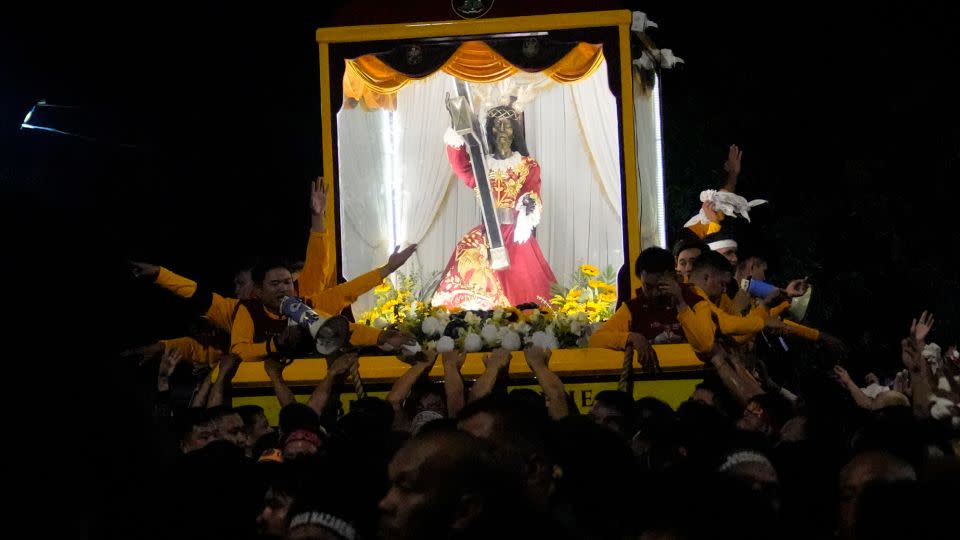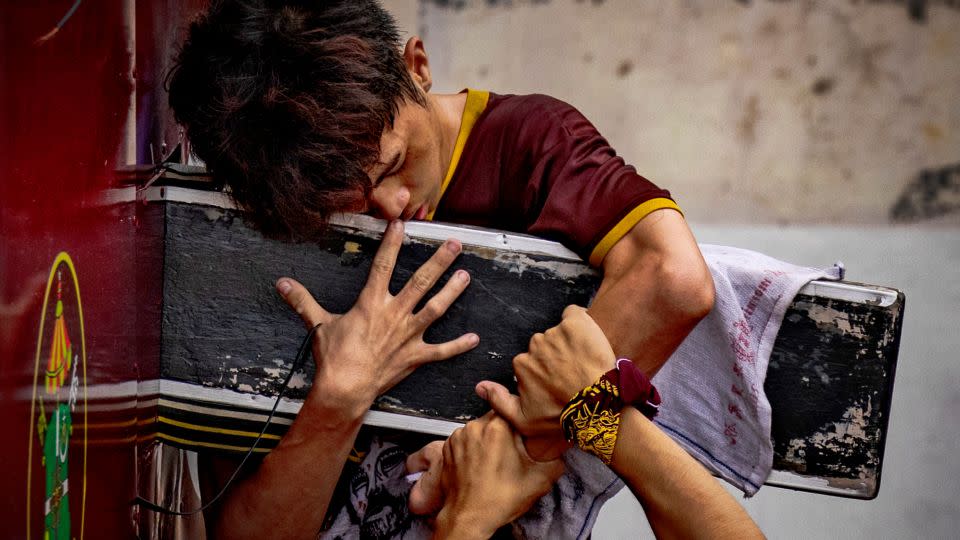Black Nazarene procession draws millions of Catholic devotees to Philippine capital
Millions of Catholic devotees flooded the streets of the Philippine capital Tuesday to honor the Black Nazarene, a centuries-old religious tradition that has returned after a three-year hiatus due to the coronavirus pandemic.
At least 6 million people jostled along the 6-kilometer (3.7-mile) route as the black wooden statue of Jesus Christ was carried from Quirino Grandstand to Quiapo Church in Manila, according to church officials.
The procession started before dawn at around 4 a.m. and lasted 15 hours, church officials said.
The turnout is comparable to pre-pandemic years but the longest procession on record was in 2012 when the Black Nazarene took 22 hours to arrive at the church.
The Philippines is Asia’s largest Catholic-majority country. About 80% of its 110 million people identify as Roman Catholic, a legacy of more than 400 years under Spain’s former colonial rule.

The procession pays homage to the statue, which many Filipinos believe has miraculous healing powers and that touching it, or the ropes attached to the main float, can bring blessings to them or their loved ones.
It is also called the Traslacion, or “transfer,” referring to the relocation of the Black Nazarene to Quiapo Church.
“I was super overwhelmed. Earlier, I didn’t know I shed a tear, maybe because of too much joy, too much excitement that the image of the Black Nazarene was let out for the Traslacion,” Rizza Batarina, 35, told CNN affiliate CNN Philippines.


The Black Nazarene dates back to 1606, when the statue of Jesus kneeling on one knee arrived in the Philippines from Mexico. In 1620, the first confraternity dedicated to the Black Nazarene was established.

In 1767, the popularity of the icon was recognized by Christian leaders when the Black Nazarene was moved to the Quiapo Church and its devotees followed.
Church historian Fr. Emilio Edgardo Quilatan explained that the statue was made of Mesquite wood, which darkens as it ages.
”It is not due to the candles of the devotees or because the ship that carries the image was burnt,” Quilatan told CNN Philippines, dismissing a popular legend about the statue.

While this year’s procession was largely peaceful, more than 700 people sought medical attention for wounds, fainting, sprains and vomiting, the Philippine Red Cross said.
About 3 million devotees took part in the last pre-pandemic Traslacion procession in 2020, which lasted some 16 hours, according to police.
For more CNN news and newsletters create an account at CNN.com

